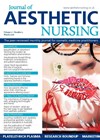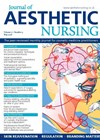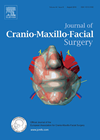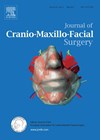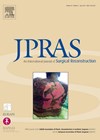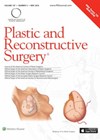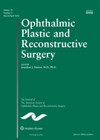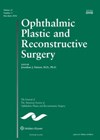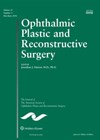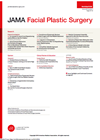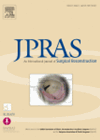
Journal Reviews archive for 2016
Upper facial rejuvenation
The author provides a comprehensive overview of a variety of considerations for clinicians to consider when assessing the upper third of the face, through discussion of anatomy, the importance of treatment planning, symptoms of complications, as well as treatment strategies....
Vulvar rejuvenation
The author explores the concept of vulvar rejuvenation; an increasingly popular area of treatment within the non-surgical aesthetic sector, describing a number of clinical presentations and treatment modalities. Equally, the author acknowledges that surgical vaginal rejuvenation procedures are well established...
CAD/CAM assisted mandibular reconstruction free hand: is there a difference?
The gold standard for the reconstruction of the mandible is a free bony flap, the fibula is commonly used. The fibula is a straight bone and indeed all the other donor sites present various other considerations and difficulties, to allow...
A modification of the crescentic flap for nasal skin reconstruction
Non melanoma skin cancers are the most frequent malignant skin tumours and in over 25% of cases affect the nose. Following excision, the reconstruction can be challenging. The nasal complex has adjacent concave and convex surfaces, minimal laxity and nasal...
Assessment of septal deviation in septorhinoplasty
A variety of methods exist to assess the nasal septum, often dependent of the healthcare resources available, and whether there is a specific pathology affecting the function of the nose. The authors present a small series of patients presenting with...
What is the best graft for nose surgery in the long-term?
The authors of this paper performed an experimental study on long-term histological changes in different grafts implanted subcutaneously in 25 New Zealand white rabbits. Ear cartilage, rib cartilage, autologous fascia, fascia allograft, diced rib and ear cartilage wrapped in autologous...
Lacrimal gland carcinoma
This is a major review of the management of lacrimal gland carcinoma, focusing mainly on adenoid cystic carcinoma. Relevant literature published in English since 1970 was included amounting to some 40 articles after filtering. Overall mortality for all lacrimal gland...
Lateral canthal position after lateral orbitotomy
This is a retrospective photographic study of changes in the lateral canthal position following a lateral orbitotomy performed via a lateral canthotomy and cantholysis of both upper and lower limbs of the lateral canthal tendon. Reconstruction of the lateral canthus...
Intravenous paracetamol in orbital surgery
This is a large prospective study of the effect of intravenous acetaminophen (paracetamol) in orbital surgery. The study included three groups of 50 patients. One group had no i.v. paracetamol, the second 1g of i.v. paracetamol within 30 minutes of...
Sliding lower lid tarsal flap
This is a retrospective review of a lower lid reconstructive technique utilising a sliding tarsal flap. Thirty-two patients who had undergone Mohs surgery were included and each had a shallow marginal defect with at least one remaining tarsal edge having...
Impact of lateral crural repositioning on alar rim position
Cephalic orientation of the lower lateral cartilages results in tip fullness, a bulbous tip, and alar instability during inspiration. It has an incidence of approximately 68% in primary and 87% in secondary rhinoplasty patients. Paquet et al. performed the first,...
Systematic review of PUC compared with textured silicone implants
Poly-urethane coated (PUC) implants have recently been back in the spotlight following the halt on Silimed implant use in Europe and this review is timely in assessing the perceived benefits of these prostheses. This review was adherent to the PRISMA...

